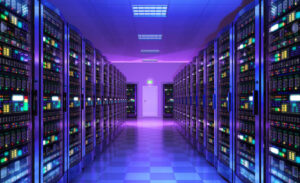Data centers are an important component of the internet. They host all the information, applications, and data we can easily access from the web today.
If you want to choose a data center to host your information, you’ll need to look into a pool of specifications to make the right call.
In this article, we’ll cover all about data center tiers, their features, and which one is the best fit for your business.
Table of Content:
- What are Data Centers?
- What are Data Center tiers?
- Types/Levels of Data Center Tiers
- Things to Keep in Mind while Choosing
What are Data Centers?

We access a multitude of websites and applications on a daily basis. For a non-techy, all this information seems to be floating in space. But that is not the case.
Every website and application is located on a physical computer, and these computers are located in large spaces called ‘data centers’.
Meaning, a data center is a large room or a facility that houses rows of stacked computers. These computers are used for storing, managing, processing, and serving large amounts of data and information for all kinds of companies across the web.
Commonly, we refer to these computers as ‘servers’.
Data centers are either owned by an entity for their own use or for renting out to other companies. For example, Amazon and Google provide cloud storage to people. They, in turn, must own or rent out data centers to safely store information on their customer’s behalf.
A data center will typically contain stacks of servers, cooling & temperature maintenance infrastructure, cables & wires for telecommunication, network streams, physical security, and other equipment required for server maintenance.
What are Data Center tiers?
In 2005, the Telecommunications Industry Association classified data centers into ‘tiers’ on the basis of certain criteria, under the TIA-942 project.
This was step was taken to standardize criteria for all public and privately owned data centers. Buyers can now easily compare different tiers and decide which one to choose on the basis of their features and specifications.
This classification takes the following elements into account:
- Network architecture
- Electrical design
- Mechanical systems
- Fire safety
- Physical security
- Efficiency
- System redundancy for electrical, mechanical and telecommunication
Types/level of Data Center Tiers
1. Tier 1 Data Center
A tier 1 data center must have the following features:
- Expected uptime of 99.671%
- Up to 28.8 hours of downtime per annum.
- Zero redundancy
Data center redundancy: this means creating proxy or duplicate components, so that in the event of component failiure, the servers aren’t affected. For example, creating a redundant power source, so that servers don’t shut down in case of a power outage.
Zero redundancy means that there is a single path for power and cooling. There are no backup components. In case of power outages or other such system failures, your data is at the risk of getting lost.
Also, tier 1 data centers offer the lowest amount of uptime of all the tiers. A fixed 28.8 hours downtime paired with no redundancies could mean a loss of data and more downtime than is acceptable.
You should only go for tier 1 data centers if you’re a small business that doesn’t heavily rely on data. Tier 1 will give you a cost-effective solution you can afford. Before taking a decision though, make sure that the center has the right temperature, maintenance staff, humidity, fire safety, etc.
2. Tier 2 Data Centers
A tier 2 data center must have the following features:
- A maximum downtime of 22 hours per annum
- A minimum of 99.741 % uptime per annum
- Some redundancies
A tier 2 data center offers redundancies for power and cooling only. They have a backup generator and a cooling system. Backup components are not present for other operation, so the system is not entirely fault-tolerant
Tier 2 offers more uptime than tier 1. It only needs to be shut down for 22 hours in a year for maintenance. Apart from that, power and cooling redundancies reduce their vulnerability to power outages or overheating of servers.
This tier is advisable for small businesses that don’t want to compromise too much on redundancy components. It might also be cost-effective, as the price is significantly lower than tier 3.
3. Tier 3 Data Centers
A tier 3 data center must have the following features:
- A maximum of 1,6 hours downtime per annum
- 99.982 % uptime
- N+1 fault tolerance
- 72 hours of protection against power outages
A tier 3 data center a significantly higher level of infrastructure when compared to tier 2. Firstly, it has multiple power sources and cooling paths. Center owners have to provide protection against power outages. They should have exclusive power for at least 3 days in case of a power outage so that the system stays online.
Multiple connection backups and redundancies mean that the system need not shut down for maintenance. Thus, downtime is not for more than 2 hours every year.
N+1 (amount required of a component for operation + backup) fault-tolerance means most components have a backup, and the system can stay online even if more than 1 components fail. Your network streams are also fully backed up.
Tier 3’s superior infrastructure satisfies the needs of most businesses, from medium to large. It only lacks some special features that tier 4 offers. It might be a bit too expensive for small businesses.
4. Tier 4 Data Center
A tier 4 data center must have the following features:
- Maximum downtime of 26.3 minutes per annum
- 2N+1 fault tolerance
- 96 hours of protection against power outages
- Redundancies for every single process or component
Out of all data center tiers, Tier 4 is the highest data center level there is. You will not find more sophisticated infrastructure and features in other tiers.
No form of mechanical or system failure will result in downtime as all components have redundancies and are backed up. There will be backup systems for cooling, power, network streams, data storage, etc.
The risk of losing your data is minimal or non-existent. The estimated downtime is not more than 28 minutes every year. The system does not need to be shut down for maintenance. It is entirely fault-tolerant, meaning your system will not shut down even if there are multiple component failures.
The crew in-charge of maintaining a tier 4 data center is usually highly qualified. The security system is also of top quality. Moreover, systems are maintained in an optimal environment to maximize efficiency.
Tier 4 provides an enterprise-level setup, so obviously the cost is also quite high. Industry behemoths that constantly experience a lot of traffic and have to maintain a lot of data usually go for a tier 4 data center. For example, organizations like Google and Amazon would be using a tier 4 data center.
Things to Keep in Mind while Choosing
When you’re choosing data center tiers, keep the following factors in mind:
- Know the feature requirement of your business.
- Research on how much each data center is going to cost you, and pick the most cost-effective one.
- Find out the location of the facility and what security measures they employ.
- See if they are providing any extra services.
- Make sure there are no hidden charges and everything you’ll have to pay is transparent from the outset.
If you have any queries or suggestions, feel free to mention in the comments below!

Divya loves writing and is passionate about marketing. When not trying to hone her skills, you’ll find her either reading or binging on TV shows.

0 Comments